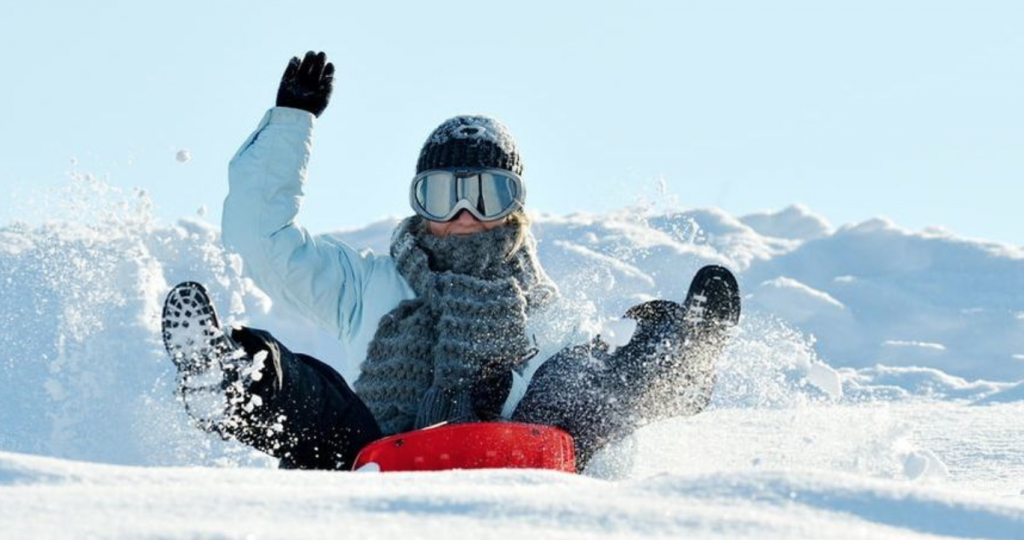Sledding is a great and enjoyable way to get kids outdoors and active during the winter. However, it’s important to think safety because sledding also involves some inherent risks. Let’s look at some basic precautions that can help to reduce injuries if accidents happen.
Scout the Slope
It’s easy to look at a nice, snow covered slope and assume that it’s safe. However, there can be obstructions, dips or unexpected bumps in the terrain that may be masked by the snow. A good rule of thumb is to walk the slope and check for potential problems before letting kids get on their sleds. Remember that it’s difficult to take evasive action or stop once a sled is barreling downhill, so there may be little time to react if someone ends up sliding into the path of an unexpected hazard.
It’s also important to choose a slope that bottoms out away from roads, parked cars, buildings or other obstructions such as trees or light poles. Surprisingly, a lot of injuries associated with sledding occur at the bottom. Remember that the sled will travel a considerable distance before stopping, and that area needs to be clear of hazards.
Finally, avoid sledding on ice-covered slopes. Ice can make sleds go faster, but they can also cause the rider to lose control, fall off or experience a hard landing that can lead to head injuries and broken bones.
Sled in the Day
Try to avoid sledding at night unless the hill and bottom are well-lit and visible from a distance. It is much-more difficult to identify and avoid hazards after dark, and kids can also get lost or disoriented if they end up sliding down an errant path.
Dress for the Occasion
Try to pick clothing that will provide protection from the cold while repelling as much snow as possible. Snow will easily find its way up sleeves and cuffs, under collars and between layers of clothing where it can melt into cold water that saturates clothing. This can lead to frostbite and hypothermia over time, and kids may not notice the warning signs. Consider giving them a change of clothes if they plan on spending an extended amount of time outdoors.
It’s also important to avoid wearing scarves, jackets with dangling material or other pieces of fabric that can get inadvertently get caught on the sled. This can limit mobility, cause kids to crash, and in a worst-case scenario, get strangled.
Be Careful
Make sure that you’re using a sled that’s appropriate for the size of the child as well as the conditions at hand. Don’t let them stand up, face backwards or have their arms or legs dangling over the sides as they are careening downhill. As a general rule of thumb, there should only be one person per sled unless someone is taking a small child. It’s also important that kids walk up the sides of the slope and out of the way of other sledders when they’re making their way back to the top.
It’s also important to try and discourage kids from taking unnecessary risks such as getting pulled by a motor vehicle or building artificial jumps and ramps. While these may seem like good ideas in the heat of the moment, it should go without saying that they can lead to serious injuries if things don’t go according to plan. Finally, consider making kids wear helmets just in case they hit their heads in a crash. While this is unlikely, it only takes one good hit to cause severe head injuries that can lead to brain damage.
These basic steps can go a long way with reducing injuries associated with sledding mishaps, but they don’t replace the need to supervise kids. Make sure that you, another responsible adult, or an older child is keeping an eye on the little ones at all times, and chances are that most sledding adventures will go off without a hitch.
